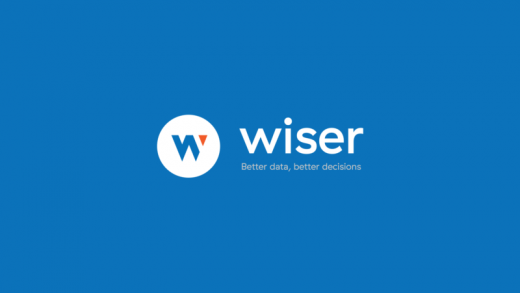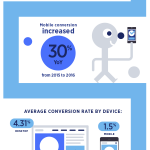Wiser Solutions combines retail analytics with e-commerce solutions, aiming to be a one-stop shop
Wiser president Andy Ballard gives more insight into the company formed from the recent merger of Quad Analytix and Mobee.

Earlier this month, Quad Analytix and Mobee — two retail-focused technology solutions — merged to form what is now Wiser Solutions, Inc., an analytics platform that also includes a workflow solution for retailers, brands and restaurants.
“It made a tremendous amount of sense to be able to offer a better solution to our customers,” says Wiser’s CEO Andy Ballard, who notes many were using two different vendors to do what Wiser can now offer as a one-stop shop.
Ballard says it would have taken Quad Analytix many years to develop the technology that Mobee offered, and vice versa for Mobee.
“One of the reasons for bringing the two together is there were several examples of existing customers that have a need for both e-commerce work but also in-store efforts to gather that information and power better decisions,” says Ballard.
As it stands, Wiser clients have access to a number of data sets, from competitive benchmarks and market intelligence analytics to optimization analytics that offer insight into in-store “shelf health” metrics. With the additional workflow solutions that are part of Wiser, brands, retailers and restaurants can do things like automate pricing on the front end of their website based on the analytics they are pulling.
“For one of our customers, in addition to the competitive information, we’re actually taking in their historical data and making pricing recommendations based on an algorithmic pricing elasticity set — trying to optimize their price based on the prices they’ve sold things at historically and the competitive prices that are out there in the market.”
Ballard says the source of the analytics they are curating is from large-scale crawling of e-commerce sites where they are pulling data multiple times a day. Wiser’s technology solution then organizes the data into a format that can be distributed to customers, highlighting where a retail business may have issues.
“Skullcandy is one of our customers that uses us for online monitoring of their retail partners and to understand if their products are priced properly,” says Ballard, “If a set of headphones is supposed to be $100, is it actually $100 — we will go out and, on their behalf, we will gather all of that data from Best Buy, Target and Amazon and other places.”
Ballard says Wiser’s technology platform “normalizes” the data, and then delivers it via an interactive user interface that alerts the end user and lets them know where the issue is and how to resolve it. According to Ballard, simply gathering the millions and millions of product SKUs is not sufficient.
“Without curation, it’s not useful,” says Ballard.
Ballard says Wiser ensures the data is accurate by implementing a series of quality controls. Making sure the company has a high accuracy rate around its data, and that it’s classifying it correctly, is very important to the CEO.
“Is it a men’s fleece, or a men’s pullover, or a men’s jacket? That might be different on L.L. Bean versus Land’s End versus R.E.I. versus BackCountry.com,” says Ballard. “For that to be a piece of information that one of those retailers can actually use, it needs to be normalized.”
Wiser’s quality-control measures also include human validation.
“When we started this, one of the things we recognized is that machines alone cannot get data to a high enough quality level. It’s not possible because data science and computer vision, and all those things, haven’t gotten to a place yet where you can consistently count on the quality.”
Ballard says there has been a human element to its quality control from the beginning. He explains the process as a conveyor belt of sorts, where data is first sent though Wiser’s data-science mechanisms.
“A simple example would be is this a women’s high heel or not? Sometimes data science is really good at answering that question, sometimes it’s not.”
Ballard says if the data is good, then it goes straight to the database, but if it is bad, then the data moves down the conveyor belt to the human element of its quality control.
One of the ways Wiser’s platform can help customers with workflow is around price automation. For example, Ballard says Wiser lets users set parameters around product pricing to automate pricing-standards.
“Some retailers want to automate pricing for their most important SKUs, and what they might do is put up a rule that may be I never want to sell this product for less than the X-percent gross margin, or I always want to be within 5 percent of Target’s price.”
Ballard says Wiser’s solution can integrate with the client’s e-commerce system so that it automatically changes those prices and sets the frequency for how often the pricing data is monitored.
Another workflow aspect of Wiser’s platform includes a Map Compliance solution that makes it possible for brands to both monitor and act on compliance details. Brands can automate communications with retailers, sending out emails alerting retailers to any product pricing policy violations.
While Wiser’s platform covers a wide set of business objectives, Ballard says its primary users are often the e-commerce and marketing teams within the company’s client organizations.
“Often e-commerce leaders would be key customers of ours,” says Ballard. “The marketing group can be key customers of ours for two reasons: one, because we’re helping them with marketing things, or because the CMO’s office is in charge of pricing or may be in charge of consumer insights, or in charge of marketing intelligence.”
Other departments interested in Wiser’s offering could also be the operations or analtyics teams, or a merchandising team because, as Ballard notes, it may be in charge of pricing, consumer behavior and product management.
Regardless of the end user, Ballard says, at some point, Wiser’s offerings need to tie back to whether or not it is meeting its clients’ goals.
“Are we improving revenue? Are we improving gross margin? Or are we improving profit in a way that our solution is addressing a critical business need,” says Ballard. “People may use our solution once a month because that’s their rhythm. Other cases, they may be in our solution multiple times per day. But fundamentally, whether they’re on either of those frequencies, it’s essential that they’re able to use it. That it becomes part of the fabric of how they do their job.”
Marketing Land – Internet Marketing News, Strategies & Tips
(33)














